
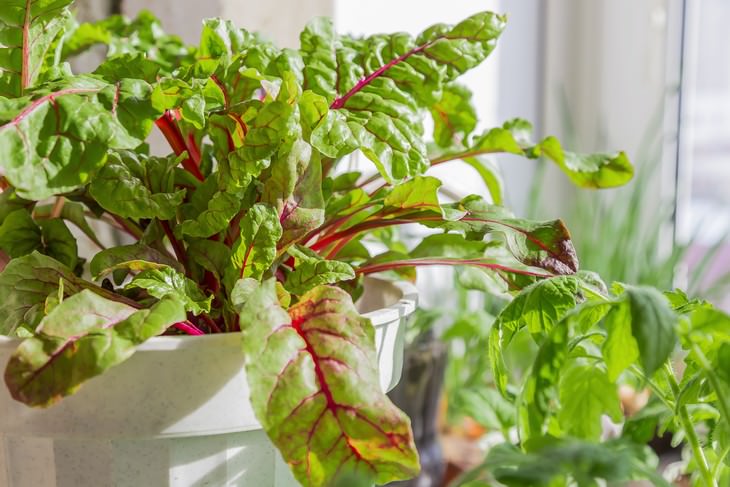
The best thing about beets is that you can eat the entire plant, using the leaves in a salad and reserving the roots for soups, salads, stews, etc. On top of that, beets are one of the healthiest vegetables in existence and have numerous impressive health benefits.
Here’s how to grow beets in a pot:
Potting: A deep (at least 17-inch) container with good drainage.
Soil: Sandy soil with a neutral pH level.
How to plant: Plant seeds 1 foot apart from each other about a ¼ inch deep in the soil.
Watering the beets often isn’t necessary, do so only when the soil in the pot is dry. Beets thrive in an environment with bright light and cool temperatures, so choose a spot in your home that isn’t in direct sunlight (at least not in warm weather). You can harvest your beets when they grow to the size of a medium apple.
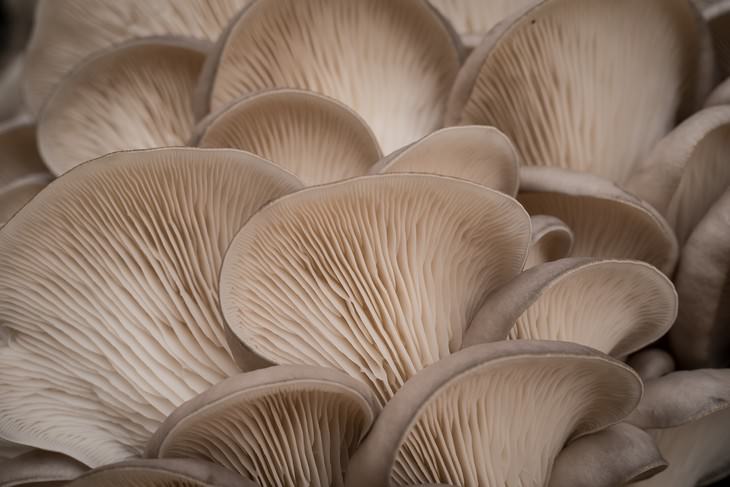
Mushrooms are versatile, delicious, and have several health benefits, but they are often pricey. Luckily, they are also one of the best candidates for indoor growing, as they don’t require sunlight. The 3 mushrooms varieties most often grown at home are champignon (white button mushrooms), oyster mushrooms and shiitake.
Growing tips for mushrooms:
Substrate: Depending on the type of mushroom you want to grow, you can use either straw or coffee grounds (oyster), hardwood sawdust (shiitake), or compost manure (white button).
Preparing the substrate: It’s best to sterilize the substrate before using it to grow mushrooms, so you’ll need to heat it up before growing.
How to plant: Mix the mushroom spawn you purchased with damp soil in a flat and broad container, and keep it in a cool and dark area (such as a basement).
You will need to keep the soil moist to encourage growth using a spray bottle. In 2-3 weeks, you should see white fuzzy patches appear in the soil, and eventually, mushrooms will start growing out of the pan. It’s fine to pick your mushrooms when the caps open up.
Do you enjoy reading articles like this one? Then you might like this one about 10 foods you can grow in a pot as well.
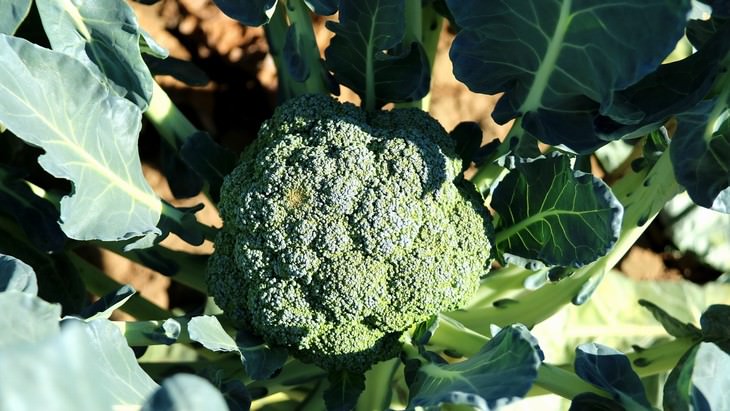
Broccoli can be grown indoors in mild weather, usually during spring and autumn. Apart from being an extremely healthy vegetable to eat, broccoli is also easy to maintain and matures rather quickly. Similarly to beets, you can use broccoli stalks and leaves in salads not to waste any part of the vegetable.
Prep: It’s best to germinate the seeds in a separate small container or seedling tray, transferring them into a pot once they grow at least 5 leaves.
Soil: Light soil with good drainage.
How to plant: Plant the seedlings in a pot around a ¼ inch deep, previously moistening the soil using a spray bottle.
Broccoli requires direct sunlight, preferably at least 6 hours every day. One large broccoli will need around 3 feet of space, so try not to overcrowd the pot, removing and repotting any excessive plants if necessary. When the broccoli grows to your preferred size (this will also depend on the seed variety), it can be harvested. Some small and medium-sized varieties can be harvested several times in a season.
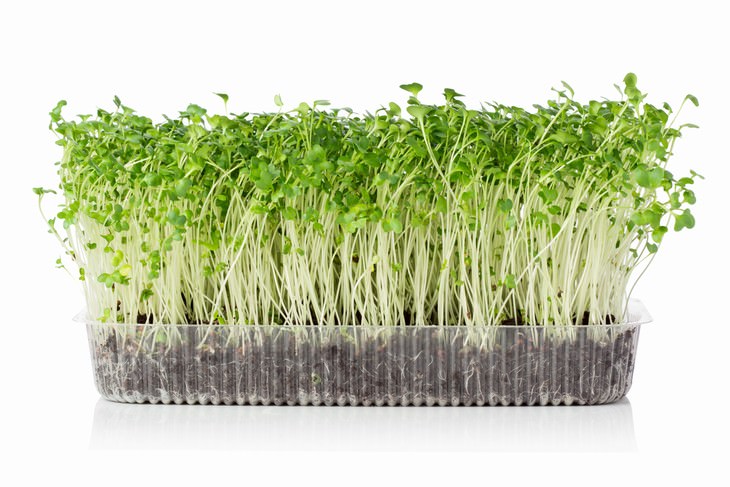
Microgreens are seedlings of herbs and vegetables grown in soil. These shouldn’t be confused with sprouts, which are much smaller and grown in water. You may think that these greens are reserved for fine dining only, but there’s a reason why chefs love to top their fancy creations with a bunch of microgreens.
Not only do these plants add a pleasant texture to any dish, but they also have incredibly high and concentrated amounts of vitamins A, C, K, as well as folate and fiber. And while they can be expensive when purchased in store, growing them at home couldn’t be simpler.
Potting: You will need a shallow tray or seedling tray with drainage filled with 2 about inches of potting mix. Dampen the tray with a small amount of water.
How to grow: Choose a good selection of different seeds (e.g. kale, beets, basil, radishes, Swiss chard, etc.) and sprinkle on the soil. Follow with another thin layer of soil and mist with water using a spray bottle.
Microgreens like sunny places and a room temperature of 60-70°F (16-20°C). You’ll need to mist the tray daily. In about 3-5 days, you should see the first sprouts, and at this point, it’s crucial for them to get plenty of sunlight. The seedlings will not be ready for another 3-5 weeks, so be patient and wait for them to grow to 1-2 inches tall.
Once ready, you can harvest the microgreens by simply cutting them about halfway, this way your seeds will yield several harvests. The greens can be consumed fresh in salads or as toppings for any dish, or kept in a container in the fridge up to 3-5 days.
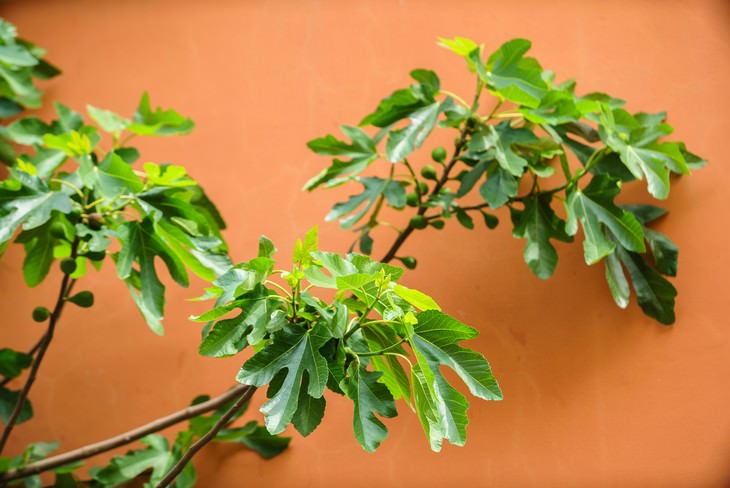
Fig trees are beautiful and luxurious, and despite popular belief, they can yield fruit indoors, and these fruits are both delicious and healthy. Now, you will have to choose the type of fig tree very carefully if you want fruit, so talk to your local cultivator to find a suitable species, such as Brown Turkey, for example.
Here are some growing and care tips:
Potting: Once you purchase your tree, it’s best to repot it into a large planter immediately, as a small pot will limit the growth of the plant. We recommend buying a small tree because it will fruit faster than if you were to grow it from a seed.
Caring for the tree: You can prune the tree to adjust it to the dimensions of your room, but keep an eye on the roots. If they start growing out of the pot through the drainage holes, it’s time to repot the tree into a pot that’s at least a ⅓ of the size larger.
Fig trees don’t have to be watered often, once a week is plenty. Reserve a spot with bright light for your fig tree because sunlight is crucial for the sugar content of the future fruit. The tree should be kept from the cold and drafts, as it doesn’t tolerate low temperatures. Fruit can be harvested once they change their color from dark green to light green or purple (depends on the species) and soften up.

Are sprouts healthy and delicious? Definitely yes. Are they also too expensive and spoil quickly? Unfortunately, the answer is also yes, but it’s not a reason to quit eating them, as growing sprouts at home couldn’t be easier.
Equipment: no soil is necessary, all you will need is a jar, a rubber band or canning lid, a piece of breathable cloth (e.g. cheesecloth), seeds, and a dish.
How to grow: Soak your seeds of choice in a jar for a minimum of 8 hours, then cover the top of the jar with the cloth secured with a rubber band. Drain the water, then refill the jar with fresh water and rinse again immediately.
In the next 5-7 days, you’ll need to repeat this fill and rinse method about twice a day until your sprouts grow to your preferred size. They are best when they’re still tender and haven’t reached a bright green color. Once ready, drain and rinse for the last time and use immediately or refrigerate in a sealed container or bag up to 2-3 days.
Looking for even more fruit and veggies you can easily grow at home? Here is another list of all kinds of herbs, fruit, and vegetables you can grow indoors.
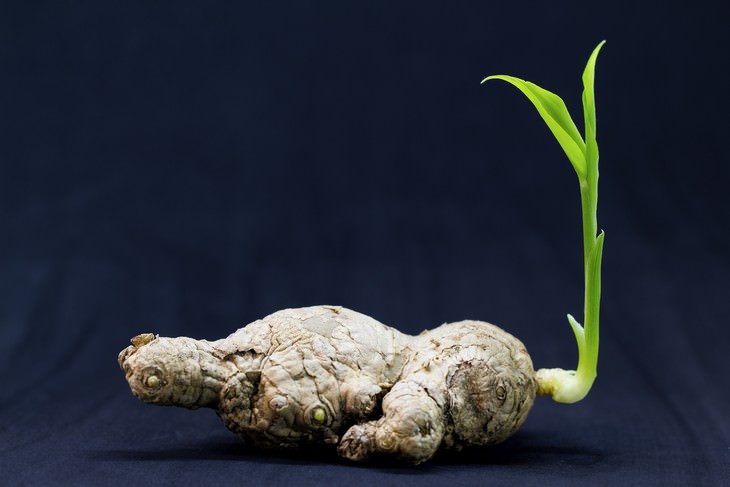
Here on Babamail we write about ginger all the time, as this root truly deserves the title of "superfood" thanks to its countless health benefits. And yet, storing ginger can prove to be a daunting task, as it tends to dry out or spoil before you manage to finish it. The solution: plant it and you’ll have a pretty much never-ending supply of ginger in your home.
How to grow: This one is a no brainer. Buy some ginger, cover it with soil in a well-drained container (placing the freshest-looking parts facing up), and wait. Soon, you’ll see sprouts growing out of the soil.
Ginger thrives in indirect sunlight and should be kept in moderately moist soil. To harvest a piece, simply pull the plant out of the soil, cut off the amount you need and repeat the planting process again, easy peasy.
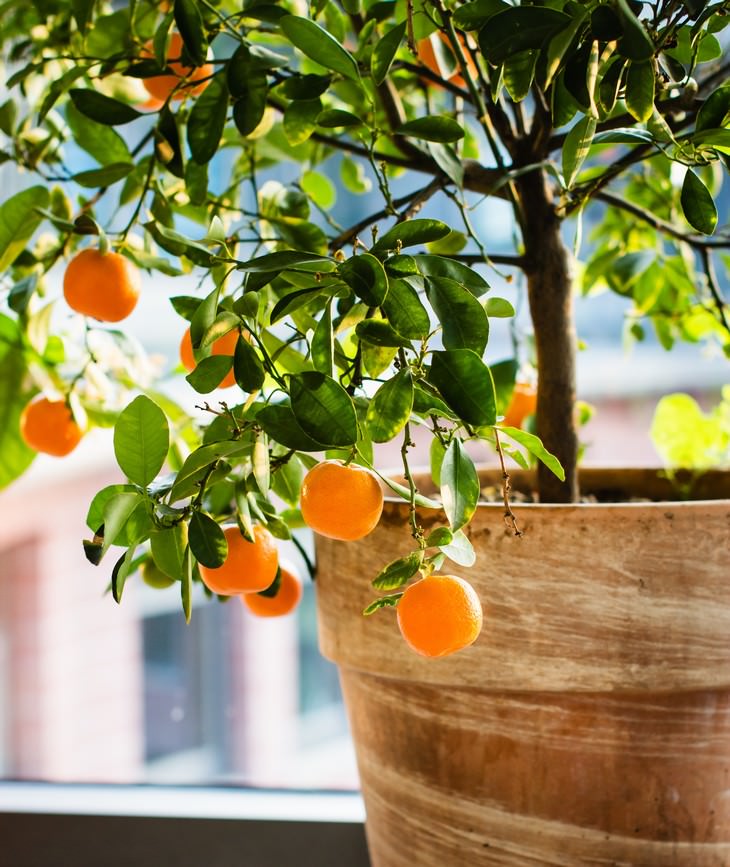
Dwarf mandarin or lemon trees are a perfect indoor plant, and if you choose the right kind, they will produce good quality citrus fruit full of essential vitamins and antioxidants (more on the health benefits here).
Here are some care tips for your mandarin or lemon tree:
Potting: a large, deep and spacious pot with good drainage is best if you want your tree to produce fruit.
How to grow: We recommend purchasing a small tree and repotting. A good indication that you need to repot your plant is when the roots of the plant start growing out of drainage holes.
Watering the tree regularly is necessary, but it’s recommended for the soil to dry a little before watering it again. The plant should have access to direct sunlight. These trees can grow up to 6 feet tall, so make sure you have enough space in a sunny spot in your home. Fruit that have turned a bright orange color are ready to be picked immediately, otherwise, they can turn bitter.